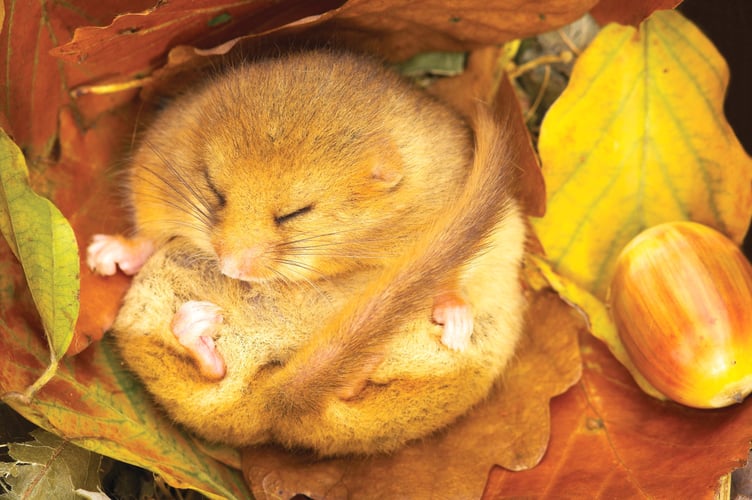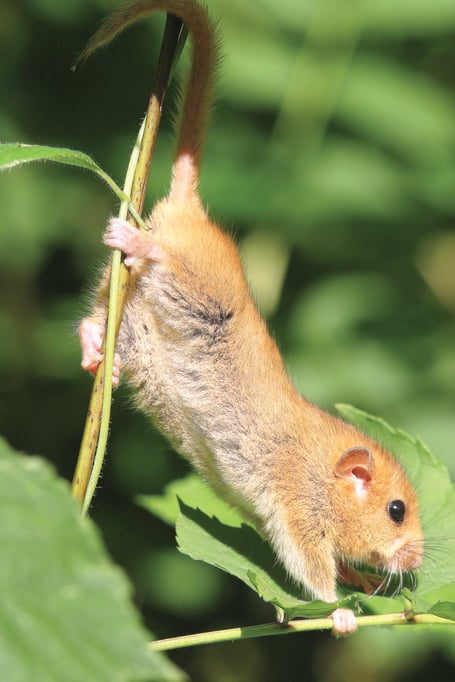THE hazel dormouse is one of Surrey’s most-loved but rarely seen residents.
These nocturnal and once-common rodents, characterised by large black eyes, golden-brown fur and long black whiskers, have been present in our county since at least the last Ice Age but have suffered big population declines.
Their numbers have dropped mainly due to the destruction and fragmentation of their woodland and hedgerow homes.
Dormice numbers have fallen by 75% in Surrey over the last 25 years alone, and research suggests they are now in chronic decline nationally and should be reclassified as endangered.
Surrey Wildlife Trust (SWT) has just launched a major conservation and habitat creation campaign to save Surrey’s dormice. The fundraising effort is part of a wider push to halt and reverse the decline of nature in our county.
The campaign aims to raise £25,000 to enable the trust to improve and protect the hedgerows and woodlands that dormice and many other species rely on. This will create healthy and connected corridors of habitat across the county.
Rarely seen on the ground when awake, these agile climbers favour the branches of native trees such as hazel, hawthorn and oak, where they live in small family groups and feed on flowers, pollen, fruits, insects and nuts.
Discarded hazelnuts with a neat round hole nibbled in their shells are the best giveaway to their presence in woodland and hedgerows.
They need a healthy and diverse ecosystem to survive, and have been chosen as the focus of SWT’s new appeal because protecting dormice and their homes will have positive effects on species from peacock and red admiral butterflies to other mammals including hedgehogs, to birds like yellowhammers and corn buntings.

SWT chief executive Jane Chimbwandira said: “It’s easy to love dormice, but their decline isn’t just a tragedy for people who care about cuteness – it is symptomatic of the decline of the wild places that we all depend on.
“The hedgerows and woodlands that dormice need to survive and thrive also support hundreds of other species, help to protect us from flooding and soil erosion, block out traffic noise, keep the air clean and store thousands of tons of carbon dioxide, which is the main greenhouse gas.”
The project manager of SWT’s hedgerow heritage programme, Katy Fielding, added: “With a properly-managed hedgerow supporting up to a dozen types of native tree, not to mention a huge variety of plant life at the margins and base, they are superhighways of biodiversity, offering shelter and safe passage to countless species.
“With something in fruit or in flower all year round, mature hedgerows also offer a permanently-stocked buffet for bees, bats, birds and butterflies as well as dormice and other mammals.”
To find out more about the campaign and how to contribute, visit www.surreylifetrust.org.



.jpeg?width=209&height=140&crop=209:145,smart&quality=75)

Comments
This article has no comments yet. Be the first to leave a comment.